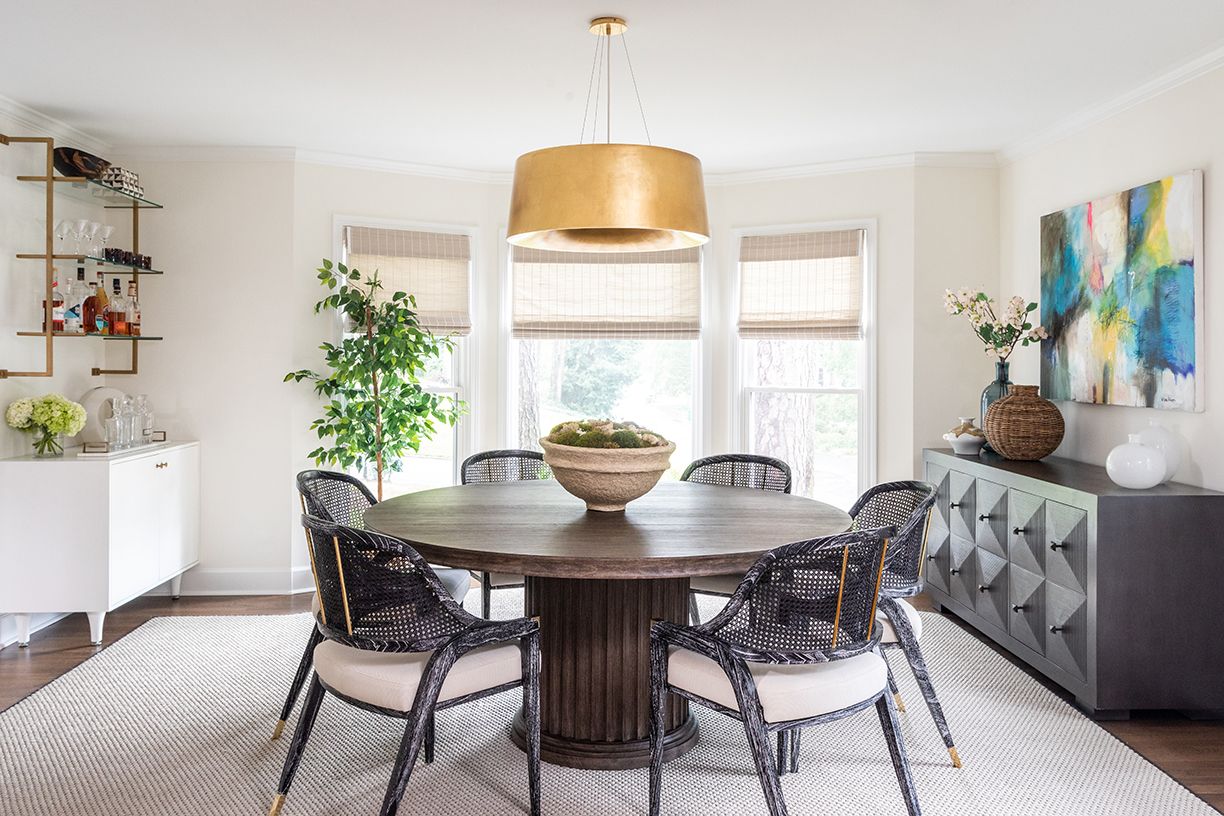Dining Room Decorating Tips
The ideal dining room design must be dynamic enough to satisfy the role of a functional feasting ground and provide an intimate setting for a social gathering among friends and family.
One of the great benefits a dining room offers is being able to implement themes into the dining room. Restaurants are great examples of this technique as most restaurants typically develop a design to match the foods that they prepare. A dining room design has no real limitations so long as its two functional roles remain intact.
The dining room should be a calm and peaceful place. If you don't have a formal dining room, do what you can to make the area where you have your meals as separate and quiet as possible.
Work with your space: ne of the most important rules for designing a dining area is to work with the layout and architecture of your home. Don't try to cram an elegant and long rectangular area into a circular breakfast nook. This concept may sound obvious, but you'd be surprised how often people try to use furniture that just doesn't fit. They fall in love with a dining set and they just have to have it without putting thought into how the set will fit into the space.
Make a wide access point directly into the dining room to build a more open look and feel. Use a lighter window finishing, and place mirrors to reflect light and achieve the impression of larger space.
Dining room table and chairs: it is important to select a table that really fits inside the dining space. Ensure that the table you choose will provide plenty of room for family and friends to navigate all sides of the table while simultaneously offering adequate amounts of table space for each dining participant.
Simple square-shaped dining tables offer elegant dining arrangements and are the best fit for an intimate couple and small families, keeping the dining occasions personal and sometimes intimate. Lighting candles atop a square table reaches an intimacy level that is unmatched by any other shape.
Tables of rectangular design are generally larger than most square tables and provide six or more seats. Rectangles are not as elegant by nature as circles and oval shapes, and therefore a rectangular table may not reach the same level of formalities as an elliptical table setting.
Rectangular tables are ideal in casual dining surroundings such as combination kitchen and dining rooms.
Flooring and area rugs: When it comes to flooring consider a wood, ceramic or stone type of product. These materials look the nicest, and they are easier to keep clean in the event of food spills.
Use an area rug under the dining table to help define and soften the dining space and bring the colours of the dining room together. Area rugs should be large enough so that the back legs of chairs do not drop off the rug when someone is dining.
Lighting: Lighting is an important element in creating a nice dining environment. The flow of energy through the dining room should be gentle but not stagnant. Use candles, lower-wattage bulbs, or a dimmer switch to bring the energy level down a little, especially at the end of a hectic day. Soft candlelight provides the ultimate setting for a romantic experience.
Pictures and paintings: Wall colour should remain fairly neutral and fade into the background of the room. Save darker tones to compliment brighter shades, and splash lighter colours onto the walls themselves.
Let the colours of tablecloths, picture frames, window sheers, furniture, and other decorations contrast wall colours and implement your bolder tones through decor rather than wall paint or trim. A typical colour scheme might include two complimenting colours for the dining room walls and trim, and then matching two to three more shades of decoration with the wall and trim colours.
Accessories: Built-in cabinetry with some open or glass fronts in the dining area can provide a dramatic place to display a collection of your china, serving dishes, etc.
Your beautiful table linens and good silverware should be used from time to time, so you can enjoy them in the present instead of waiting for some future date to use them. Plan a special
sit-down-together dinner with your partner or family one night a month (or more often, if you can). Making this a regular event reinforces how special your loved ones are to you. Using a tablecloth, rather than individual placemats, encourages closeness among family members.

